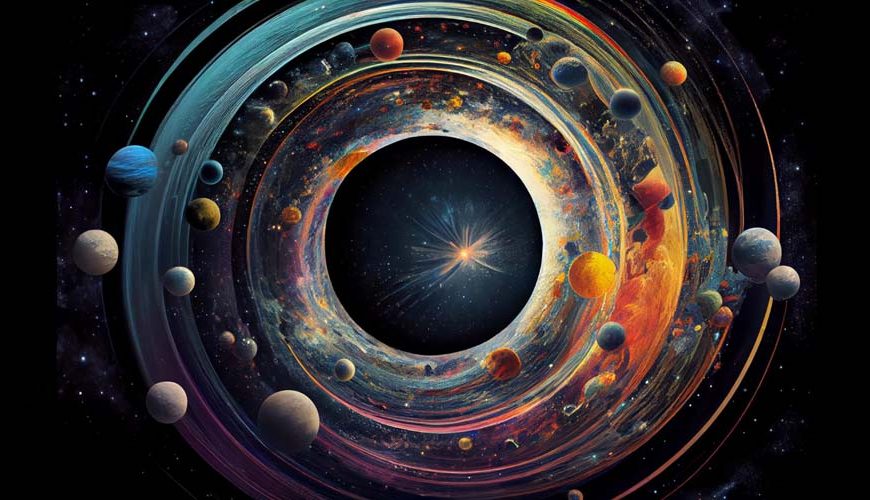The endless canvas of the night sky has always been fascinating since the dawn of time. This fascination has led to the development of a scientific branch known as astronomy. For young kids, it is important to introduce the concept of astronomy in an engaging way. Are your kids updated on the recent successful mission by India in Astronomy? If your answer is ‘Chandrayan-3’, then you encourage space study in children. Nevertheless, let us further explore what astronomy is, the history of astronomy, fascinating astronomy facts, and how we can cultivate an interest in astronomy for children.
What is Astronomy?
Astronomy is the scientific study of celestial objects, space, and the universe as a whole. It encompasses the observation and explanation of stars, planets, galaxies, and even phenomena that occur outside of Earth’s atmosphere.
Why is it important to teach astronomy to children? Introducing astronomy for children can be an enriching experience. It stimulates curiosity, encourages critical thinking, and opens up an entirely new world of discovery.
The Evolution of Astronomy: From Ancient to Modern Times
Now, let us delve into the history of astronomy. It is as vast as the universe itself. It has evolved through the centuries, shaping our understanding of the world and beyond.
Ancient Observations
The history of astronomy can be traced back to ancient civilizations like the Babylonians and Egyptians, who mapped the stars and recorded celestial events. They used their observations to track time and seasons, laying the foundation for early astronomical studies.
The Renaissance Period
The development of the telescope by Galileo Galilei during the Renaissance marked a turning point in the history of astronomy. This invention allowed for more detailed observations, leading to groundbreaking discoveries like Jupiter’s moons.
Modern Astronomy
In recent years, advancements in technology have allowed for deeper exploration of the cosmos. The history of astronomy now includes space missions, space telescopes like the Hubble, and the search for extraterrestrial life.
Medieval Islamic Astronomy
The history of astronomy also includes the critical contributions of Mediaeval Islamic scholars. They preserved ancient Greek texts, made significant improvements in astronomical instruments, and developed new mathematical techniques.
The Copernican Revolution
One of the pivotal moments in the history of astronomy was the Copernican Revolution. Nicolaus Copernicus proposed a heliocentric model where the Sun was the centre of the solar system, challenging the long-held belief that Earth was at the centre.
The Space Age
The 20th century marked the beginning of the Space Age, a significant chapter in the history of astronomy. This era saw the launch of the first artificial satellite, Sputnik, by the Soviet Union in 1957, followed by human space exploration and the establishment of space agencies like NASA.
“Astronomy compels the soul to look upward, and leads us from this world to another.”
Plato, Philosopher
Fun Astronomy Activities for Kids
- Observing the Night Sky
- Creating a Star Chart
- Space Camps and Workshops
Observing the night sky is one of the most magical activities of astronomy for children. A simple telescope or even binoculars can bring distant stars and planets to life. Children can learn about constellations and their historical significance.
A hands-on project like creating a star chart can ignite a child’s interest in what is astronomy. By mapping the stars and their locations, children not only learn about astronomy facts but also develop spatial and analytical skills.
Several organisations host space camps and workshops designed specifically for children. These events often include expert lectures, telescope viewing sessions, and interactive activities that make learning the history of astronomy and other astronomy facts enjoyable.
4 Fun Astronomy Facts for Kids
- The Sun’s Enormity
- Space Travel
- The Universe’s Expansion
- Utilising Modern Technology
Among the amazing astronomy facts, the sheer size of the Sun stands out. It contains 99.8% of the total mass of the entire solar system and is over 109 times the diameter of Earth.
Space travel, a significant part of the history of astronomy, has led to some interesting facts. For example, the famous astronaut Neil Armstrong was the first human to walk on the Moon, but not many know that astronaut Alan Shepard played golf on the Moon’s surface!
A captivating fact about what is astronomy is the continuous expansion of the universe. It’s not only expanding but doing so at an accelerating rate, a discovery that led to the Nobel Prize in Physics in 2011.
In the age of digital advancement, astronomy for children has reached new heights. There are now numerous applications and online platforms that allow children to virtually explore the universe. These digital tools not only provide vivid imagery of celestial bodies but also offer interactive simulations and quizzes. Coupled with real-life telescope observations, these technologies offer a holistic approach to understanding what is astronomy. By combining traditional activities with modern technology, we can make the history of astronomy, astronomy facts, and the entire subject more accessible and enjoyable for the young minds of today.
Engaging with Astronomy for Kids: Beyond the Basics
Understanding what astronomy is goes beyond mere observation. By embracing activities tailored for children, delving into the endless astronomy facts and trivia, and exploring the multifaceted history of astronomy, we can inspire a new generation of astronomers, scientists, and curious minds.
Astronomy for kids is not just about looking at the stars; it’s about understanding our place in the universe, appreciating the grand scale of the cosmos, and nurturing a sense of wonder and exploration. The endless sky is not a limit but a beginning, a starting point for discovery, innovation, and understanding.
The history of astronomy, the fascinating facts, and the activities geared towards children collectively contribute to making astronomy not just a subject to be studied but an experience to be lived. It’s a field that transcends cultural and geographical boundaries and connects us with the universal desire to explore and understand the cosmos.
Conclusion: Inspiring the Next Generation
The exploration of outer space and understanding astronomy is not just for scientists and scholars. It’s a subject that can captivate young minds and foster a lifelong love for learning. By focusing on astronomy for children, we can provide the next generation with the tools to explore the universe, delve into the history of astronomy, and uncover fascinating astronomy facts. The stars are not just distant points of light; they are a doorway to endless possibilities and discoveries, waiting to be explored by curious young minds.
Do you desire a fun and educational journey for your young ones regarding space learning and astronomy? Then enrol your children at EuroKids soon, where we will take them on an exciting journey for space adventure and other fun activities.
For informative and accurate articles on all things related to your new born-toddler’s development, growth, health and nutrition, follow EuroKids Blogs and do check out our nationally recognized preschools – EuroKids for the first step in your kid’s educational journey!















